
Synchlora aerata, the wavy-lined emerald moth or camouflaged looper, is a species of moth of the family Geometridae. The species was described by Johan Christian Fabricius in 1798. It is found in most of North America.

Synchlora frondaria, the southern emerald, is a species of emerald moth in the family Geometridae. It is found in the Caribbean, Central America, North America, and South America.

Synchlora irregularia is a species of emerald moth in the family Geometridae first described by William Barnes and James Halliday McDunnough in 1918. It is found in North America.

Nemoria obliqua is a species of emerald moth in the family Geometridae. It is found in Central America and North America.
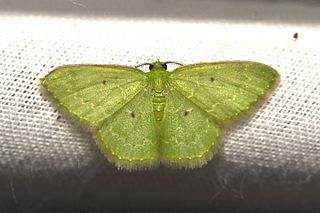
Nemoria lixaria, the red-bordered emerald, is a species of emerald moth in the family Geometridae. It is found in North America.
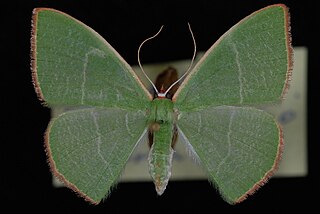
Nemoria leptalea is a species of emerald moth in the family Geometridae. It is found in Central America and North America.
Chlorosea margaretaria is a species of emerald moth in the family Geometridae. It is found in North America.
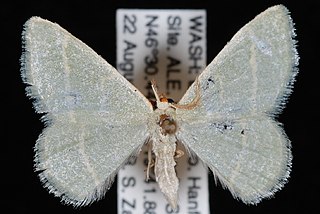
Chlorochlamys triangularis is a species of emerald moth in the family Geometridae. It is found in North America.

Dichorda illustraria is a species of emerald moth in the family Geometridae. It is found in Central America and North America.

Chlorosea banksaria, or Bank's emerald moth, is a species of emerald moth in the family Geometridae. It is found in North America.
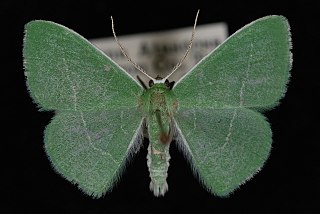
Nemoria zygotaria is a species of emerald moth in the family Geometridae. It is found in North America.
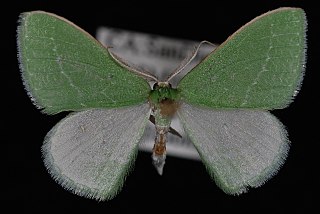
Synchlora faseolaria is a species of emerald moth in the family Geometridae.
Nemoria pistaciaria is a species of emerald moth in the family Geometridae. It is found in North America.

Dichorda consequaria is a species of emerald moth in the family Geometridae. It is found in Central America and North America.
Nemoria latirosaria is a species of emerald moth in the family Geometridae. It is found in North America.
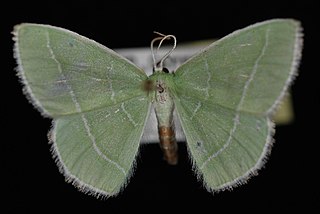
Nemoria tuscarora is a species of emerald moth in the family Geometridae. It is found in North America.
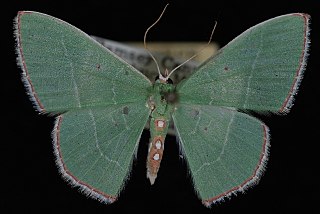
Nemoria zelotes is a species of emerald moth in the family Geometridae. It is found in North America.
Synchlora pectinaria is a species of emerald moth in the family Geometridae.
Nemoria rindgei is a species of emerald moth in the family Geometridae. It is found in North America.

Chlorosea nevadaria is a species of emerald moth in the family Geometridae. It is found in North America.
















